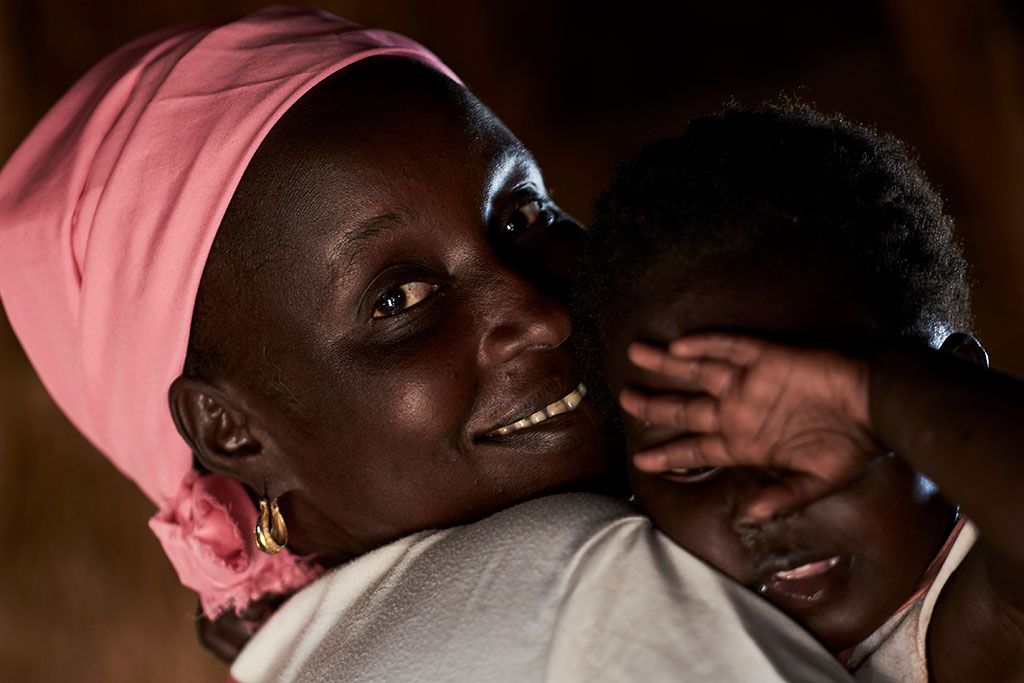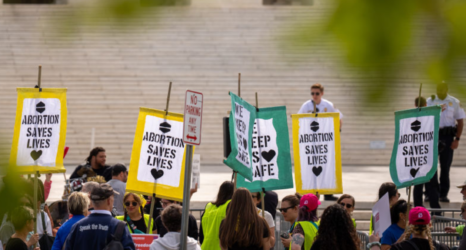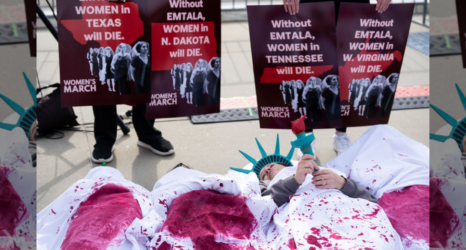With new restrictions on abortion headed to the Supreme Court, many are wondering what it will mean for women if Roe v. Wade is overturned. We looked to other countries for answers.

Consider this: Every day around the world some 96,000 women risk their lives to an unsafe abortion, seeking to end an unintended pregnancy. Millions of women face complications following an unsafe abortion and at least 22,000 die every year. This latest push to overturn Roe v. Wade aims to deny women autonomous control over their own bodies and presages a return to the days before Roe, in the U.S. when the death rate due to illegal abortion among women of color was 12 times that of white women.
MSI Reproductive Choices works in many countries where abortion is heavily restricted and we are called on daily to provide life-saving post-abortion care to women and girls who tried to end an unwanted pregnancy themselves. Faith Pyentim, a midwife from Nigeria, described one teenage girl who sought help after a desperate attempt to end an unintended pregnancy. “There was a bad smell, so we knew there was infection. She was 17 then, unmarried with a child at home already.”
That young woman received treatment for her infection, left with contraception to prevent future unintended pregnancies, and has since returned to school. But not everyone in this situation can access life-saving post-abortion care.
Restrictions Increase Unsafe Abortions
Wherever they live, whatever the laws of their countries, women will terminate unintended pregnancies—so access to a safe abortion must be included in essential health care. In fact, abortion-related deaths and disability are highest in countries where abortion is most heavily restricted. Analysis by the Guttmacher Institute showed that, in countries where abortion is very restricted and in those where there are fewer restrictions, the incidence rate of abortion is similar, with about 40 percent of unintended pregnancies ending in abortion.
But while the rate of abortion is similar, in countries where abortion is restricted and highly stigmatized, women resort to unsafe methods that significantly increase complications and death. In sub-Saharan Africa, where laws are generally more restrictive, deaths from unsafe abortion have increased steadily since the 1990s. Adolescents from rural areas, like the young woman Faith served, are particularly at risk.
Bárbara Pérez, an MSI team member in Mexico, described what she sees in rural areas where access to abortion services is limited: “On many occasions women do things like sticking wires into themselves to end the pregnancy. We have had cases where women have taken a pesticide used in fields when they found out they were pregnant.”
Unsafe abortions are the cause of an estimated 13 percent of pregnancy-related deaths in many developing countries—and because of underreporting, the real number is likely much higher. The consequences are far-reaching. Seven million women face complications each year, including serious health conditions such as hemorrhage, infection, incomplete abortion and infertility. Public health facilities bear much of the burden of treating these injuries, and women carry the added burden of stigma. Many women suffer chronic abortion-related illness without receiving the medical care they need.
Unsafe abortions are the cause of an estimated 13 percent of pregnancy-related deaths in many developing countries—and because of underreporting, the real number is likely much higher.

Beyond the direct health care costs of treating women who have had an unsafe abortion, there are significant indirect consequences: social stigma because a woman or girl had to resort to an unsafe procedure; children orphaned when they lose mothers; women disabled and unable to work; families whose hopes are dashed by infertility. These are preventable tragedies, easily remedied by access to low-cost safe abortion services.
Fewer Abortion Restrictions Save Lives
At MSI, we know laws alone don’t fix the problem. In Zambia, for example, abortion is legal on several grounds, including to protect the physical or mental health of the woman. But the law required three doctors to sign off before a woman received care. In a country with one doctor for every 12,000 people, this requirement meant that it was frequently impossible to deliver the services women need. What seemed harmless on paper was a major obstacle to safe and timely care in practice, and deaths from unsafe abortion remained high, accounting for 30 percent of pregnancy-related deaths in the country.
MSI Zambia knew change was needed for the women who could not secure the required signatures and were at risk of seeking unsafe abortion. MSI Zambia began working with the Ministry of Health and other stakeholders to develop new guidelines to supplement the law that would make safe abortion more available. In 2018, after four years of persistent advocacy, new guidelines were finally approved and now only one doctor’s signature is required in case of “emergency,” defined broadly enough to include risk of unsafe abortion or threats to a woman’s health. Now we are pushing to change the law to align with practice.
Ensuring Access Through Policy
Other countries—such as Nepal—are leading the way. Nepal legalized abortion in 2002, but when unsafe practices continued, the government included abortion care under the country’s Universal Health Care plan in 2016. Progress towards universally safe services is still uneven, but there are promising signs. The Nepal Demographic Health Surveys from 2011 and 2016 showed an increase in the proportion of women who know safe abortion is available at government facilities (71.4 percent to 79 percent). More people know abortion is legal now (38 percent to 41 percent), and clinics have also seen an increase in women seeking safe abortion care.
Shraddha Adhikari, an MSI health care provider in Nepal, explained the impact of universal health care: “Sustainable and equitable access to abortion service can only be achieved when safe abortion care is not separated from other components of health care. As a health care provider, I am very proud that I am serving to save women’s lives. If we are unable to provide service, then many women face health care complications and even die.”
Restrictive laws don’t stop women who are determined to end an unplanned pregnancy from finding ways to do this—they never have, and never will. MSI Reproductive Choices will continue to care for women and girls who need us, and push for legal and policy changes to protect their right to choose.
Up next:





